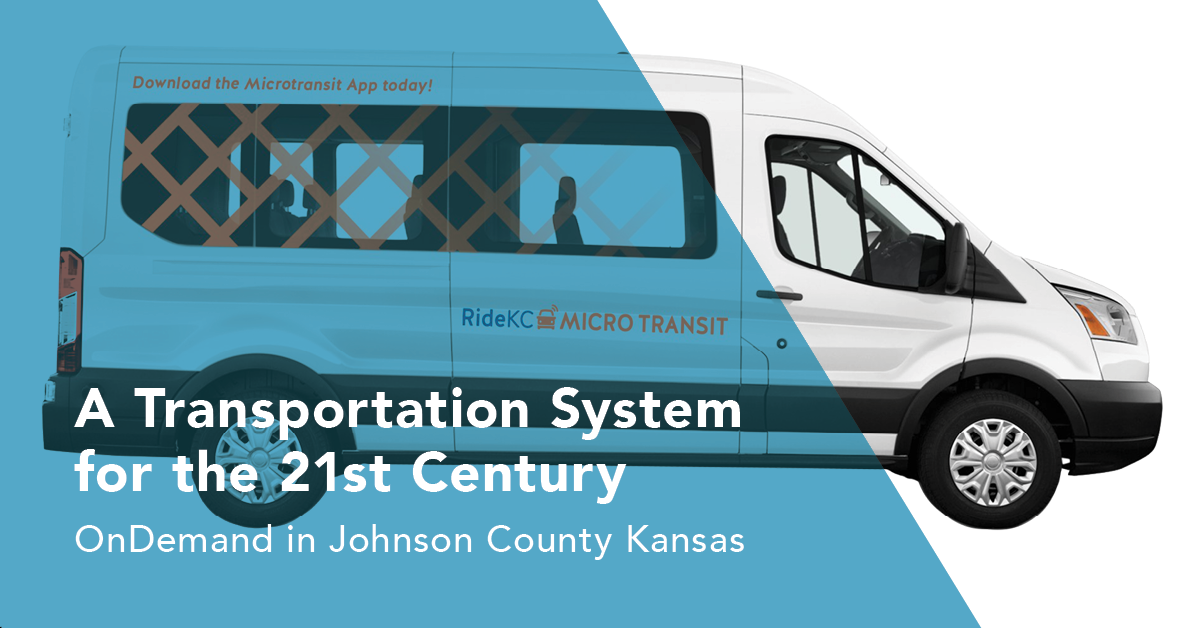
Over the last five years, the Kansas City area has been a hotbed of innovation for transportation. This includes consolidating fixed-route and paratransit into a single regional service and brand, RideKC, and creating a regional same-day mobility solution that provides older adults and persons with disabilities the same flexibility and mobility opportunities as riders without disabilities. Innovation also included Johnson County – the most densely populated county in the Kansas City metropolitan area – partnering with the Kansas City Area Transportation Authority, TransLoc, and local service provider, Kansas City Transportation Group (KCTG) to launch the next generation of microtransit in a car-centric suburban environment. Josh Powers, Business Liaison at the Johnson County Government, notes that “For an innovation of this type to be relevant, you have to know your clients, and TransLoc’s ability to plan and tailor a mobility solution that fit the suburban fabric and community desire of Johnson County is why microtransit has worked so well here.”
Since the launch of microtransit in late January there have been over 19,000 trips completed on the microtransit service with a daily high ridership of 157 trips. Powers happily admits that he and the team managing the microtransit service are surprised by how successful the program has been thus far. Despite high ridership numbers, there have been a few challenges. Primarily, running 4 vehicles in an area that is nearly 50 square miles Monday through Friday, and over 60 square miles on Saturdays, has resulted in longer than expected wait times. To address higher wait times, Johnson County has utilized their existing contract with KCTG to supplement the AM/PM and after-lunch midday peaks with an hourly-rate taxi. “The fact that TransLoc’s system is flexible enough for us to ‘plug in’ another vendor to supplement our service has been a huge positive, and lets us, both, control costs as well as provide shorter wait times,” Powers said. “Finding the appropriate balance of fixed route and microtransit service relative to both cost as well as policy objective is our current focus.”
The success of the microtransit program has encouraged Johnson County officials to consider microtransit as a permanent feature of its transit network. By creating a flexible, data-driven solution that fits the unique environment of Johnson County, they are creating a service that customers are excited about using. While community feedback has been overwhelmingly positive, understanding how microtransit integrates with and impacts other services, county-wide will be important moving forward. Powers noted that while earlier iterations of demand-response have existed in the form of deviated service or dial-a-ride service, microtransit offers a modern solution to these services. The big difference between the antiquated solutions of the past and microtransit is that the ability to schedule on-demand, same-day trips increases customer satisfaction, and the data that comes from the ridership can be used to more effectively monitor, grow, and modify the service.
To truly embrace the future of mobility in Johnson County, microtransit will need to go beyond being solely software and the data that is collected. Powers pointed out the many overlapping on-demand services in the county, and how those services are building redundant service areas, service hours, and expenses. The key for what comes next will be to focus on decentralizing the current microtransit service to include all riders, no matter their age, physical abilities, or socio-economic status, and focus on providing a single on-demand solution. Additionally, there needs to be a shift in harnessing the data that is collected to focus on how to better plan fixed-route or the placement of micro-mobility solutions, as well as helping the county find ways of integrating into the larger transportation ecosystem. As Powers stated, “The biggest challenge now is truly harnessing our data and using it to create a 21st century transportation system for our community.”
Read more about on-demand in Johnson County by downloading our RideKC case study today!